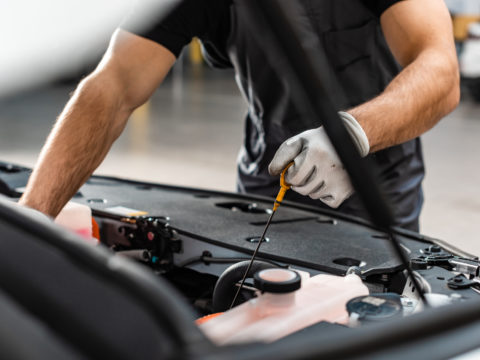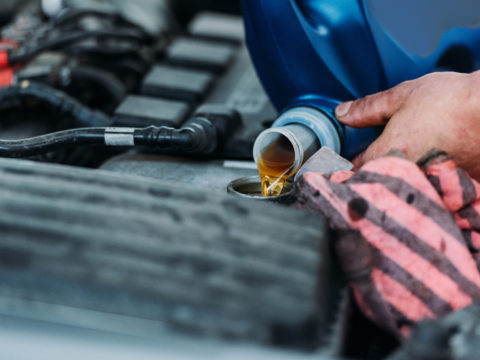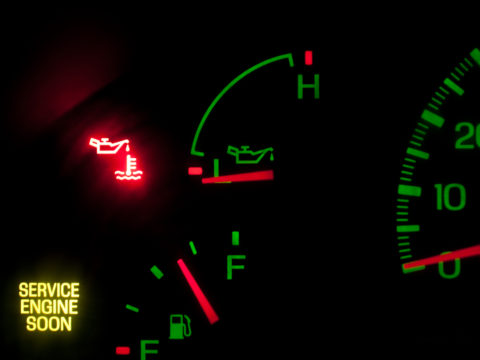Air Oil Separators are a smart addition to most vehicles because they help the engine run efficiently and keep it clean under the hood. There are different reasons for getting one and many options on the market. Keep reading for a complete guide to buying, installing, and using Air Oil Separators.
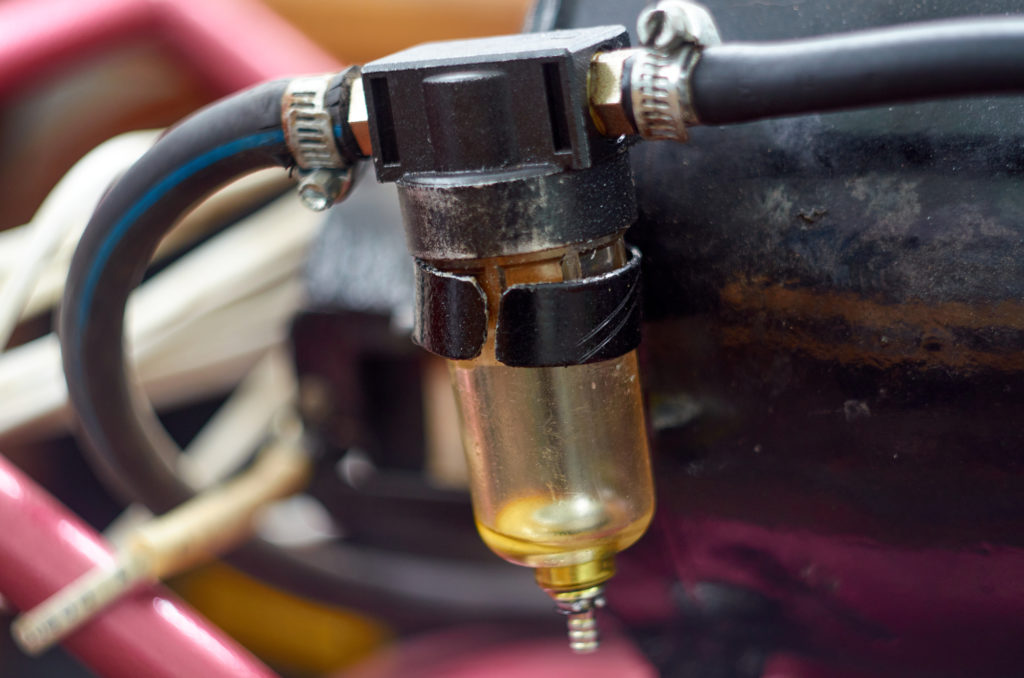
As a car runs, the engine cylinders emit gasses. Street legal vehicles are not allowed to emit these gasses into the atmosphere, instead, they need to be recirculated back into the engine, which will also relieve pressure in the engine.
However, these gasses pass through the PCV system of the engine and they pick up traces of oil. If this oil makes it back into your engine, it can cause a harmful build-up and potential improper detonation of the cylinders.
Cue an Air Oil Separator that operates just how its name indicates. The Air Oil Separator, or AOS, pulls the oil out of the vapors. It then redistributes the substances to where they belong in the engine. The vapors push back into the engine and the oil returns to the PCV system for further use.
Contents
How Does an Air Oil Separator Work?
Air Oil Separators are a superior piece of equipment. They use a hose with a super narrow filter to suck in the oil vapors. When the air passes through the hose, it takes a sharp turn to exit the AOS.
The air can make this sharp turn, but the oil cannot. This is when the oil separates from the air and is collected in the AOS until its redistributed back into the PCV system.
There is also something called a catch can that has a similar function. The difference is that catch cans do not filter the oil back into the engine. Instead, it just collects inside the catch can and needs emptying every so often.
Compared to a catch can, Air Oil Separators are state of the art and make better use of the collected oil rather than wasting it.
When Do You Need an Air Oil Separator?
If it isn’t clear if an AOS is necessary, this is a list of the most common reasons you may need an AOS.
Improved Performance Driving
Overall, an AOS helps keep the engine clean and running smoothly. When the oil residue builds up in the engine, it can slow performance. It also recycles oil for better efficiency.
Losing Too Much Oil
If an engine loses a quart or more of oil between changes, an Air Oil Separator may be necessary. This is simply a waste of money and oil that your engine could be successfully recycling.
Noticing Oil Build-Up
A build-up of oil residue can significantly slow your engine’s performance and even lead to cylinder combustion problems if they become blocked. Removing this residue is quite a hassle, so it’s best to prevent the build-up with an AOS.
Increased Horsepower
If someone wants to increase their horsepower, adding an AOS to their engine can improve the efficiency of the PCV system and therefore increase the horsepower to the engine.
Direct Injection Engine
A direct-injection engine means the gasoline is injected directly into the combustion chamber. These engines use internal combustion and differ from manifold fuel injection systems, which inject fuel into the intake manifold. These engines produce a lot of oil residue and vapors, so an AOS will help them run better.
What Is the Best Air Oil Separator?
For those looking to buy and install an Air Oil Separator, it’s hard to know where to begin. Here is a review of the top five Air Oil Separators and reviews to go with them to help car owners decide which is best for their needs.
1. GrimmSpeed WRX/STi Air-Oil Separator
The GrimSpeed AOS is one of the most popular Air Oil Separators on the market because it suits many cars due to its compact size. It is also about $260, which is very affordable compared to other Air Oil Separators. Like most Air Oil Separators, the GrimSpeed maintains itself and coalesces oil without mesh media.
The GrimSpeed works well with Subarus, one of the most likely car brands to need an AOS installed.
2. Moroso AOS
The Moroso AOS is a bit pricey, hovering around $400, but is huge for cars that collect a lot of oil from the vapors. Unlike most AOS, this one needs manual draining. Luckily, because of the large capacity, it only needs to be done every once in a while.
A major plus for this AOS is that it works with almost any factory PCV system, meaning that the PCV system doesn’t need to be replaced for the AOS to work.
3. Perrin Air-Oil Separator
The Perrin AOS also works with factory PCV systems, saving the owner time and money by not replacing this system. The Perrin increases intercooler efficiency, which improves the overall performance of your vehicle.
The best part about the Perrin is that it uses a powder coating that is super durable and long-lasting. This AOS isn’t as cheap as the GrimSpeed, but will likely last you longer because of its durability. The AOS is especially effective in cold weather, where others may seize in the cold.
4. Crawford Air-Oil Separator
The Crawford AOS differs from the others. It uses a new chamber system that creates a gravity-like pull to separate the oil and the air. This method replaces the sharp corner turn and pulls more oil from the air using suction.
The unit is also water-cooled, which means there is no risk of condensation. Condensation can be detrimental to Air Oil Separators because if the oil mixes water, it’s nearly impossible to separate the air.
5. IAG Performance AOS
The IAG AOS is the most expensive one on this list, but that’s because it is for performance handling. This AOS likely will require a tune-up before installation, but will significantly improve handling and horsepower.
This AOS uses high-quality materials like steel to ensure it lasts a long time. Although it’s pricey, at just under $500, it should last you at least ten years. The IAG AOS is also large and ideal for massive engines and performance vehicles. These can work in different vehicles but are especially effective in Subarus.
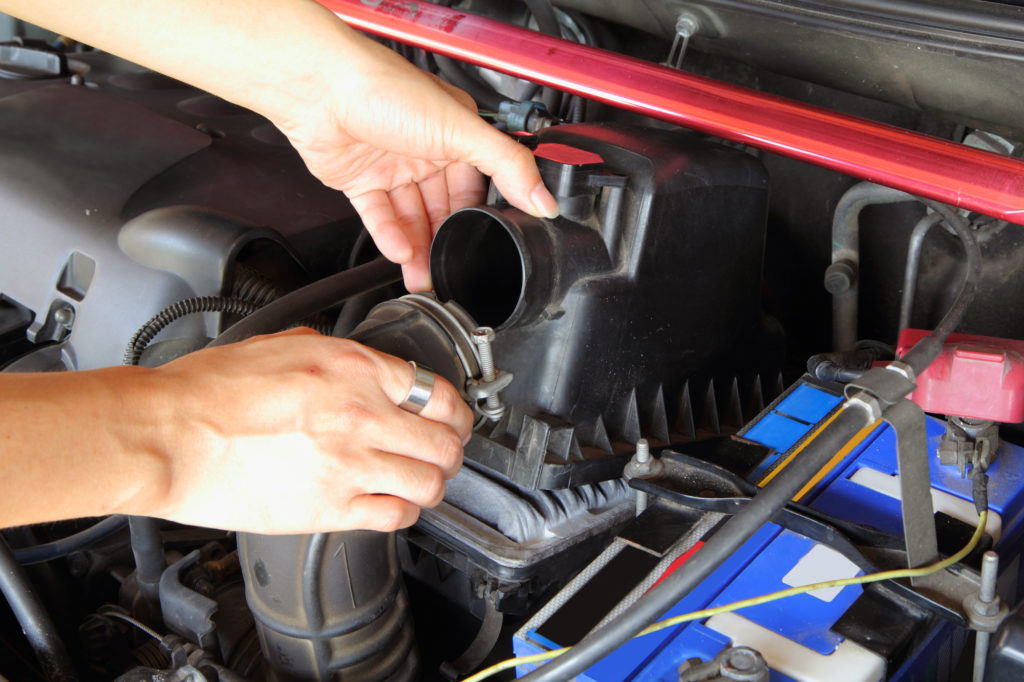
How Do You Install an Air Oil Separator?
When installing an Air Oil Separator, it’s important to read the specific AOS instructions for installation. Some of them are specific, but the following is a general guide to installing most Air Oil Separators.
Tools Needed
- Gloves (optional)
- Cutters for the hoses
- Sealant for around the AOS
If you want, you can accomplish this almost entirely without tools, but we do recommend cutters or a wrench to release the hoses.
- Mount the bracket for the AOS in an appropriate location near the PCV lines.
- Disconnect the PCV hoses and connect the AOS to the PCV lines.
- Connect the drain hose to the oil system.
- Mount them on the bracket and reconnect the PCV hoses.
How Much Is the Installation Cost?
The average price of installing an Air Oil Separator is around $300. This price does not include the cost of parts.
However, this is just an average and depends on the mechanic and the location within the country. Some may charge $650, while others only charge $150. The AOS itself is usually between $150 and $650.
In short, this process could cost anywhere from $300 total to nearly $1,000.
Air Oil Separator FAQs
These are frequently asked questions about Air Oil Separators from people looking to install one.
Is an air oil separator the same as a catch can?
They have the same function, but the catch can need to be emptied frequently and doesn’t reuse the oil it collects.
Do you need a tune for an air oil separator?
Most Air Oil Separators made for street use do not require a tune before or after installation. However, some AOS units are made for competitions, like racing. These usually do require a tune before installation.
Does an air oil separator increase horsepower?
Air Oil Separators do not in and of themselves increase horsepower. However, a well-functioning PCV system increases horsepower, and an Air Oil Separator helps your PCV system run efficiently. So indirectly, an AOS can increase your horsepower.
What happens when an air oil separator fails?
When an AOS fails, it can lead to a build-up of oil. Basically, the oil-infused air makes its way into your engine, and this can result in a slowdown of your engine’s performance. Aside from that, there aren’t any other consequences.
Do you have to drain an air oil separator?
For the most part, no, because the oil is sent back into the PCV system after being filtered out of the air, there is nothing to empty or drain.
However, sometimes larger Air Oil Separators require drainage, but other options are available that self-maintain.
Will an air oil separator void the warranty?
Most manufacturers will tell you, yes, but this isn’t necessarily true. Some will not void the warranty unless the AOS results in some sort of damage to the car. It’s best to review your specific warranty and see if it mentions Air Oil Separators.


